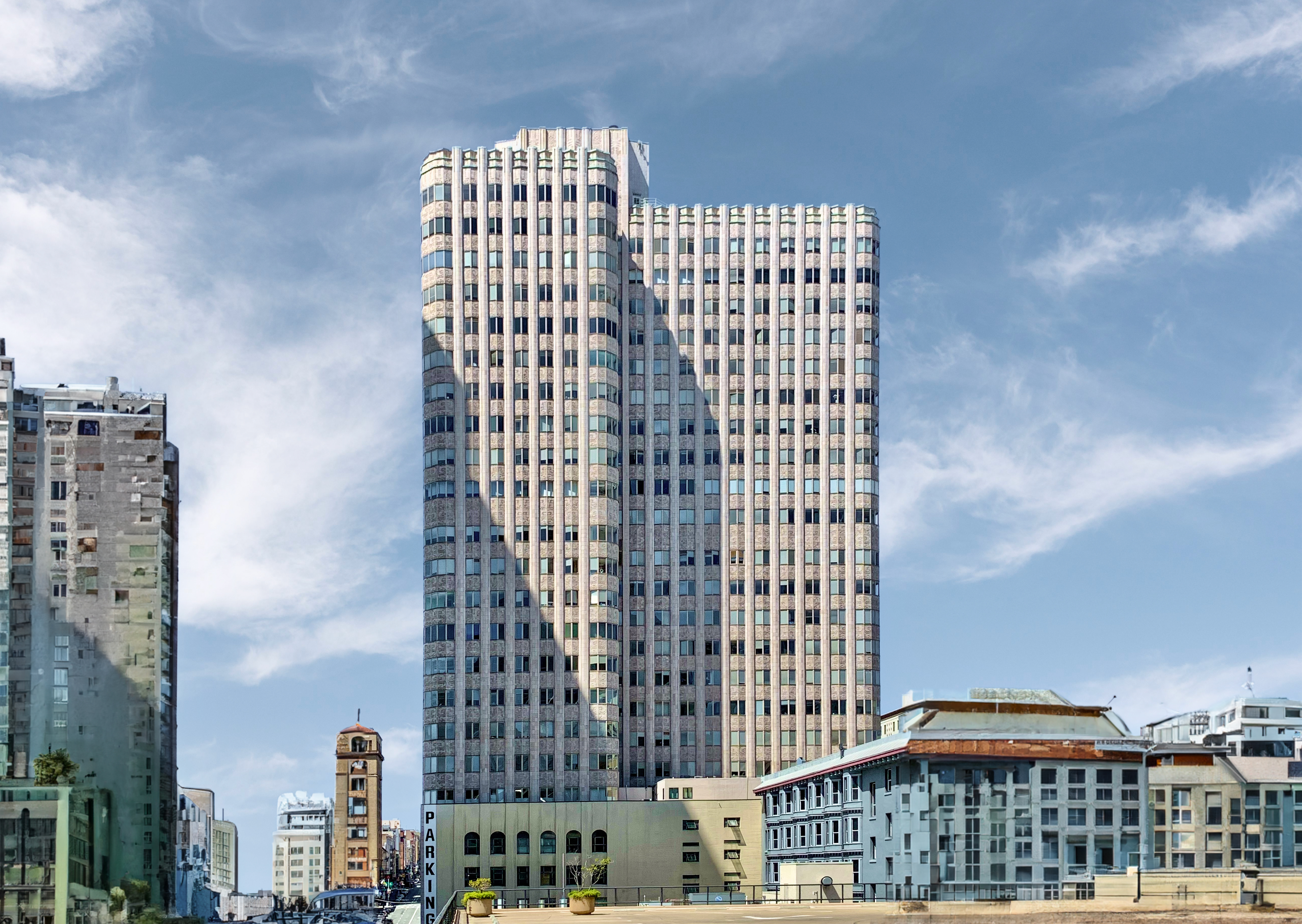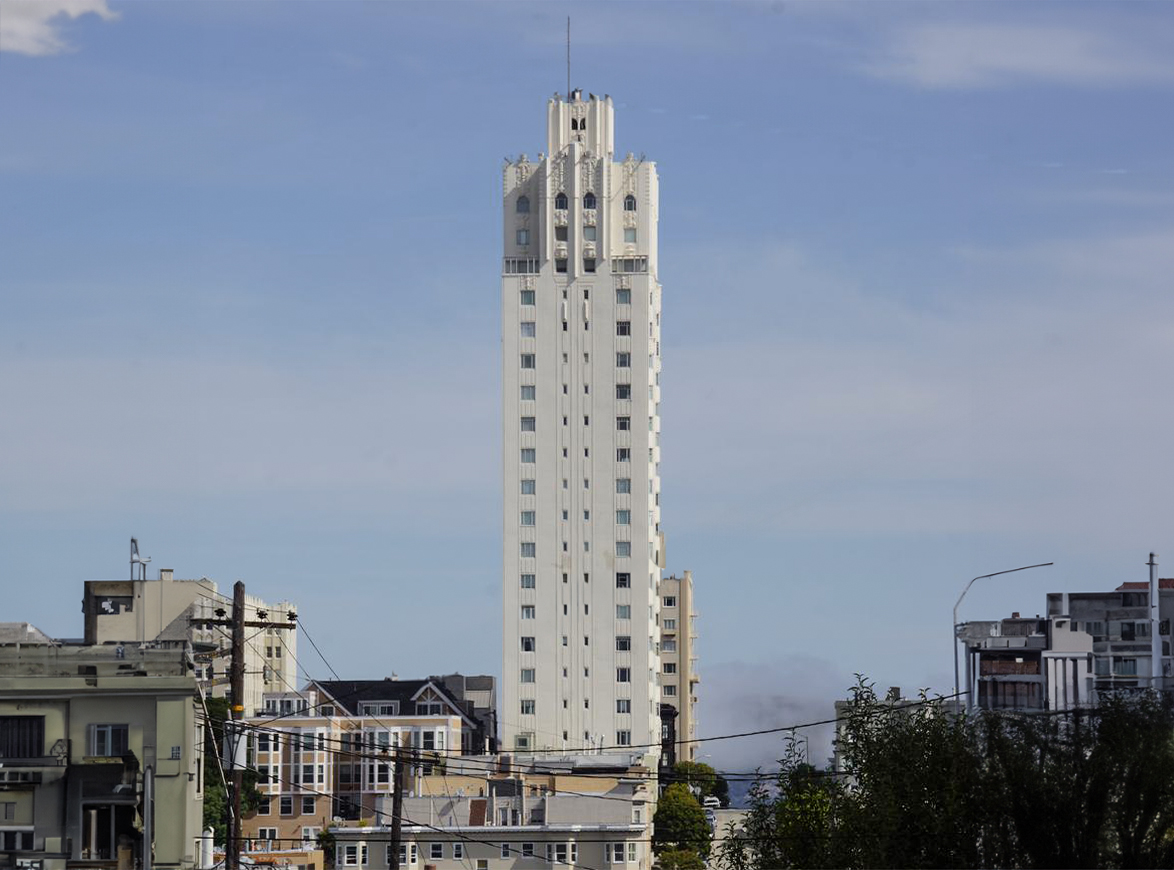The McAllister Tower Apartments is an Art-deco skyscraper designed by Lewis P. Hobart, and built in 1930, for a reported $2.80 million dollars, in San Francisco, CA.
McAllister Tower Apartments is not the only name you might know this building by though. It is common for companies to want to attach their names to iconic buildings when they move in, or for the general public to come up with nicknames, and this one is no exception. The McAllister Tower Apartments is also known, or has been known as, 100 McAllister, Temple Methodist Episcopal Church, William Taylor Hotel, or Empire Hotel.
Its precise street address is 110 McAllister Street, San Francisco, CA. You can also find it on the map here.
The McAllister Tower Apartments is a structure of significant importance both for the city of San Francisco and the United States as a nation. The building embodies the distinctive characteristic features of the time in which it was built and the Art Deco style. Because of that, the McAllister Tower Apartments was officially included in the San Francisco Register of Historic Places in 2009.
The building has been restored 2 times over the years to ensure its conservation and adaptation to the pass of time. The main restoration works happened in 1938 and 1981.






